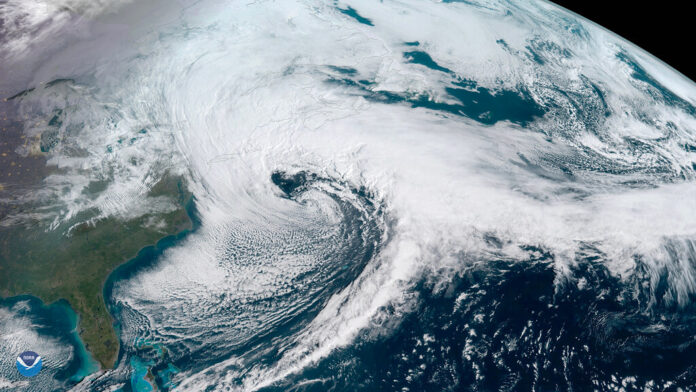Predicting the Earth’s weather is a complex scientific process that integrates meteorology, climatology, atmospheric physics, and computer modeling and a simplified overview of how weather prediction works,
Overall, the prospects of weather change prediction are promising, driven by ongoing technological innovations, interdisciplinary collaboration, and a deeper understanding of Earth’s complex atmospheric system. While challenges remain, such as predicting rare events and uncertainties associated with climate change, continued research and development efforts hold the potential to further improve forecast skill and advance our ability to anticipate and respond to weather-related challenges
- Data Collection: Weather prediction starts with gathering data from various sources such as weather stations, satellites, buoys, radar systems, and weather balloons. These sources provide information on temperature, humidity, wind speed and direction, atmospheric pressure, and other relevant factors. b. Numerical Weather Prediction (NWP): Meteorologists use mathematical models known as Numerical Weather Prediction (NWP) models to simulate Earth’s atmosphere and forecast future weather conditions. These models divide the atmosphere into a three-dimensional grid and use equations based on principles of physics to simulate how weather variables change over time.
- Initialization: NWP models require initial conditions, which are obtained from the collected data. This includes the current state of the atmosphere, such as temperature, pressure, and wind patterns. These initial conditions are crucial because small errors can amplify over time and lead to less accurate forecasts. d. Model Integration: Once initialized, the NWP model runs simulations to predict how weather variables will evolve over time. The models solve complex mathematical equations representing atmospheric dynamics, thermodynamics, and other processes. The models typically run several simulations with slight variations in initial conditions to account for uncertainties. e. Forecast Output: The output of NWP models provides forecasts for various weather parameters, such as temperature, precipitation, cloud cover, and wind patterns.
Weather changes are primarily caused by interactions between the atmosphere, oceans, land surfaces, and other factors: a. Solar Radiation: The Sun is the primary source of energy for Earth’s weather systems. Variations in solar radiation, such as changes in solar output and the tilt of Earth’s axis, contribute to seasonal changes in temperature and weather patterns. b. Atmospheric Circulation: The movement of air masses driven by differences in temperature and pressure creates atmospheric circulation patterns. These patterns, such as the Hadley, Ferrel, and Polar cells, influence weather conditions by redistributing heat and moisture around the globe.
- Ocean Currents: Ocean currents play a crucial role in regulating Earth’s climate and weather. Warm ocean currents can transport heat from the equator to higher latitudes, affecting temperature and precipitation patterns. For example, the El Niño and La Niña phenomena in the Pacific Ocean can cause significant changes in weather patterns worldwide. d. Greenhouse Gases and Climate Change: Human activities, such as burning fossil fuels and deforestation, have increased the concentration of greenhouse gases in the atmosphere. This leads to global warming and climate change, which can alter weather patterns by intensifying heatwaves, storms, and precipitation events.
- Weather Fronts: Weather fronts occur when air masses with different temperatures and moisture content meet. The interaction between these air masses can lead to changes in weather conditions, including the formation of clouds, precipitation, and changes in temperature and wind direction. f. Natural Phenomena: Natural phenomena such as volcanic eruptions, wildfires, and dust storms can temporarily alter weather patterns by injecting particles and gases into the atmosphere, affecting temperature, visibility, and air quality.
- Human Activities: Human activities, such as urbanization, agriculture, and industrial processes, can also influence local weather conditions through the release of pollutants, changes in land use, and alterations to the landscape’s thermal properties. Understanding the complex interactions between these factors is essential for predicting and mitigating the impacts of weather changes on society and the environment.
The success rate of weather prediction can vary depending on several factors, including the time frame of the forecast, the region being forecasted, and the specific weather parameters being predicted,
- Short-Term Forecasts (0-3 days): Short-term forecasts generally have high accuracy, especially for basic weather parameters like temperature, precipitation, and wind speed and direction. Meteorological agencies often achieve accuracy rates of around 90% or higher for short-term forecasts in many regions. b. Medium-Range Forecasts (3-7 days): Medium-range forecasts have lower accuracy compared to short-term forecasts but still provide valuable information about upcoming weather patterns. Accuracy rates for medium-range forecasts can vary widely depending on factors like the complexity of weather systems and the availability of observational data. Typically, accuracy rates for medium-range forecasts range from 70% to 85%. c. Long-Range Forecasts (beyond 7 days): Long-range forecasts are inherently more uncertain due to the greater complexity of atmospheric processes and the limitations of current prediction models. Accuracy rates for long-range forecasts tend to decrease significantly as the forecast period extends beyond seven days
Long-range forecasts are often used for general trend analysis rather than precise predictions of specific weather events. Accuracy rates for long-range forecasts may range from 50% to 70% or lower, depending on the region and weather conditions. d. Extreme Events: Forecasting extreme weather events such as hurricanes, tornadoes, and severe storms poses significant challenges due to their complex and rapidly evolving nature.
The prospects of weather change prediction are influenced by advancements in technology, improved understanding of atmospheric processes, and access to more comprehensive data.
Here are some key factors shaping the prospects of weather change prediction: a. Advancements in Numerical Weather Prediction (NWP): Continued improvements in NWP models, computational power, and data assimilation techniques enhance the accuracy and reliability of weather forecasts. High-resolution models with finer grid spacing and improved parameterizations allow for better representation of small-scale weather phenomena. b. Increased Observational Capabilities: Advancements in observational technologies, including satellite remote sensing, ground-based sensors, and aircraft observations, provide more detailed and comprehensive data on atmospheric conditions. These observations help initialize models more accurately and improve forecast skill. c. Ensemble Forecasting: Ensemble forecasting techniques, which involve running multiple simulations with slight variations in initial conditions and model parameters, provide probabilistic forecasts that account for uncertainty. Ensemble forecasts help convey the range of possible outcomes and improve decision-making under uncertainty.
- Integration of Climate Models: Integration of climate models with weather prediction models enables the simulation of long-term climate trends and their influence on weather patterns. This integrated approach allows for better understanding of climate variability and improves the prediction of extreme weather events in a changing climate. e. Machine Learning and Artificial Intelligence: Machine learning algorithms and artificial intelligence techniques are increasingly being applied to weather prediction tasks, such as pattern recognition, data assimilation, and post-processing of model output. These methods have the potential to improve forecast accuracy and efficiency, particularly for complex nonlinear processes.
Overall, the prospects of weather change prediction are promising, driven by ongoing technological innovations, interdisciplinary collaboration, and a deeper understanding of Earth’s complex atmospheric system. While challenges remain, such as predicting rare events and uncertainties associated with climate change, continued research and development efforts hold the potential to further improve forecast skill and advance our ability to anticipate and respond to weather-related challenges.























